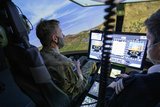How innovations in force protection are reshaping modern combat (Studio)
Ongoing conflicts worldwide continue to illustrate the importance of force protection technologies. (Photo: Rafael)
Brought to you in partnership with Rafael
Force protection (FP) has traditionally been defined as a series of defensive measures designed to protect military personnel, equipment and infrastructure from symmetric and asymmetric threats to preserve freedom of action and operational effectiveness.
Given the rapidly evolving nature of the modern battlespace, the most advanced armed forces worldwide are now considering how technologies used to defend static positions can be employed to support offensive operations, particularly combat manoeuvre through complex and contested areas of operation. Ongoing conflicts worldwide continue to illustrate the importance of FP across the contemporary operating environment (COE).
Social media channels are awash with footage of anti-tank missiles and one-way attack drones destroying personnel and equipment on both sides of the war in Ukraine, while in Gaza, Hamas regularly uploads videos of rocket-propelled grenade (RPG) attacks on Israeli armoured platforms.
‘You can have the best air force and intelligence in the world, but if you don’t have strong, fast, powerful and long-range manoeuvre to break through enemy lines, you cannot win a war,’ explained Guy Bitton, the head of business development at Rafael’s Land & Manoeuvre Directorate.
Discussing lessons learned from the COE, Bitton specifically highlighted the danger of asymmetric threats, explaining: ’When an adversary doesn’t have the budget, they start to become very sharp and intelligent and today everybody can buy anti-tank missiles and rockets in a very cheap and easy way to facilitate this kind of strike.’
In understanding the notion of asymmetric warfare in the COE, one sees that weaponised fixed-wing and quadrotor drones can incapacitate ground combat vehicles worth ‘millions of dollars’.
‘This is what we refer to as three-dimensional, 360-degree, “full hemisphere” threats which can come from any direction, even an underground tunnel. Today, it’s not just about looking to the front and a little to the sides.’
Land warfare expert Chris Foss agrees that the nature of the threat has changed, and protection can no longer be concentrated on the front of armoured vehicles, for example.
‘If we look at the main battle tank, the main area of protection has always been over the frontal arc. And that gives you protection against sabot and some types of HEAT attack. Today, the threat can come anywhere between the 360 degrees,’ Foss explains.
‘And that’s why, for example, the Israeli Defense Force has fitted the Trophy active protection system on the Merkava main battle tanks. And that can protect not only incoming anti-tank guided weapons but also against most gun-launched unguided projectiles.
‘So really, an active protection system like Trophy increases the viability of the platform and enables you to manoeuvre with a much higher survivability rate. If you haven’t got that, it limits your manoeuvre capability.'
Evolving Force Protection
With a long history in FP, Rafael’s Land & Manoeuvre Directorate is responding quickly to emerging demand signals from the COE, which include the ability to protect combat manoeuvre forces during offensive operations.
‘Rafael is a technology lab for Israel’s Ministry of Defense, so there is a very close connection with the Israel Defense Forces [IDF],’ Bitton explained before describing how the company continually updates its knowledge of the COE through regular briefings with commanders from across the force.
‘This is why we bring a lot of technology and a lot of systems and capabilities that can help the force to manoeuvre on the battlefield,’ he said, highlighting Rafael’s approach to FP.
The Trophy Active Protection System (APS) is the cornerstone of Rafael’s FP offering. Combat-proven on board multiple IDF ground combat vehicles, including the Merkava MkIV main battle tank and Namer armoured personnel carrier, Trophy is designed to protect vehicles in open terrain as well as in densely populated, urban areas. Given the extensive operational history with the IDF, European and other international users have opted for Trophy on both MBTs and AFVs.
‘The feedback we have received from the IDF shows that Trophy is not just an APS but also an enabler for offensive operations. Not only does it protect the team, Trophy also enables manoeuvre,’ Bitton said, highlighting video footage which showed Trophy successfully neutralising RPGs at very close-in range.
‘If a commander identifies a point on the map where his unit must get to within a certain period of time, Trophy enables that unit to reach that place under any threat. This is force protection for an agile and rapid combat manoeuvre force,’ he continued.
Foss contrasts APS such as Trophy with other forms of armour, such as reactive armour (ERA), pointing out that APS offers the advantage of being reusable, whereas ERA panels need replacement after activation.
This highlights a move toward systems that offer both passive and active protection layers, which Foss describes as a ‘survivability onion’, where multiple layers of defence (including ERA, bar, and slat armour) work together to enhance vehicle durability.

While Foss highlighted the integration challenges of APS, particularly on lighter or smaller vehicles due to spatial constraints, he emphasised the advantage of these systems being readily adaptable to various operational environments.
Futureproofing Force Protection
Responding to requests from the IDF and international customers, Rafael is constantly adapting to evolving threats, including airborne. Some of these capabilities have been proven in recent live fire tests, which show top attack defence capability.
Bitton elaborates, ‘Trophy is able to protect vehicles against top and salvo attacks by anti-tank guided munitions and loitering munitions.
‘Our message to all of our customers, whether they be in Israel, Europe, North America and beyond, is that we now bring even more capabilities to the full hemisphere arena,’ enabling the most advanced protection to both crews and platforms in the field, Bitton stated.
Rafael's latest Modular C-UAS solutions for force protection can operate alongside Trophy APS in a combat formation to further improve combat ground manoeuvre across the battlespace. The C-UAS Drone Dome solution, with its laser interception capability, can be integrated onboard 4x4, 6x6, and 8x8 wheeled and tracked vehicles to support counter-drone missions as well as other force protection mission sets.
The company's Modular C-UAS solutions are capable of detecting, identifying and neutralising drone threats thanks to electro-optical and radar sensors and a variety of plug-and-play soft and hard kill effectors, which can include Rafael’s Radio Frequency jammer; Lite Beam high energy laser; and anti-drone drones.
Additional hard kill effectors include a 30mm cannon on board Rafael’s Samson remote-controlled weapon station (which can be programmed to fire airburst ammunition) and the company’s popular Spike LR2 anti-tank and anti-personnel missile.
‘This is just a taste of the kind of capability we are bringing to the battlefield to support FP but also enable effective ground manoeuvre,’ Bitton concluded.
More from Studio
-
![Intelligence advantage: How real-time GEOINT is reshaping military decision-making (Studio)]()
Intelligence advantage: How real-time GEOINT is reshaping military decision-making (Studio)
In today’s contested operational environment, adaptability is key. The new Geospatial-Intelligence as a Service (GEO IaaS) solution from Fujitsu and MAIAR empowers militaries by enabling intelligence advantage, combining advanced technology with human expertise to deliver actionable insights.
-
![Training Together: Unlocking Educational Excellence through Military and Industry Collaboration (Studio)]()
Training Together: Unlocking Educational Excellence through Military and Industry Collaboration (Studio)
Military training is ultimately about people. At Capita, training programmes are built on close engagement with partners, delivering an educational approach that can adapt to individual needs, cultivate leadership – and drive wider cultural change.
-
![Enhancing Military Training Through Digital Technology (Studio)]()
Enhancing Military Training Through Digital Technology (Studio)
Digital technologies offer huge opportunities for defence training. However, militaries must adopt an agile approach, placing the needs of their organisations and personnel at the centre of their efforts.
-
![Layered Defence: How new technologies are enhancing armoured vehicle survivability and manoeuvrability (Studio)]()
Layered Defence: How new technologies are enhancing armoured vehicle survivability and manoeuvrability (Studio)
As modern threats evolve, armoured fighting vehicles face a new era of challenges, from loitering munitions to kinetic energy projectiles. Advances in active, passive, and reactive protection systems are crucial to ensuring battlefield dominance, freedom of manouver and vehicle survivability.
-
![Seizing the Future: The Imperative for Militaries to Master AI and Forge Strategic Alliances]()
Seizing the Future: The Imperative for Militaries to Master AI and Forge Strategic Alliances
The current pace of innovation demands a new strategy for success, focusing on developing technology to meet specific defence goals and ensuring collaborative efforts.
-
![Turning the Hiroshima Accord into Action: Enhancing UK-Japan Defence Collaboration (Studio)]()
Turning the Hiroshima Accord into Action: Enhancing UK-Japan Defence Collaboration (Studio)
The UK-Japan strategic partnership leverages joint defence initiatives, advanced technologies, and SME integration to enhance military capabilities, foster innovation, and ensure regional and global stability through collective action and effective project management.

























